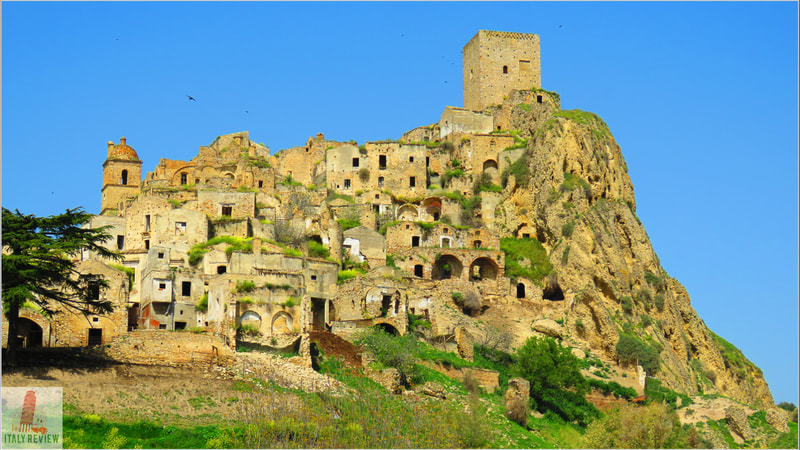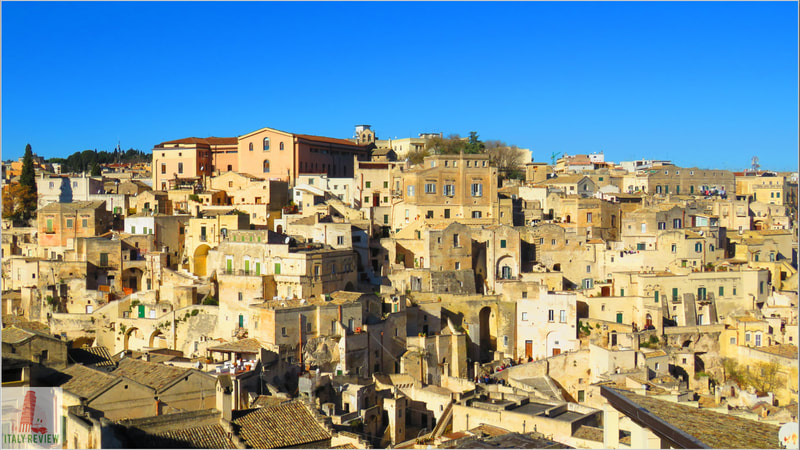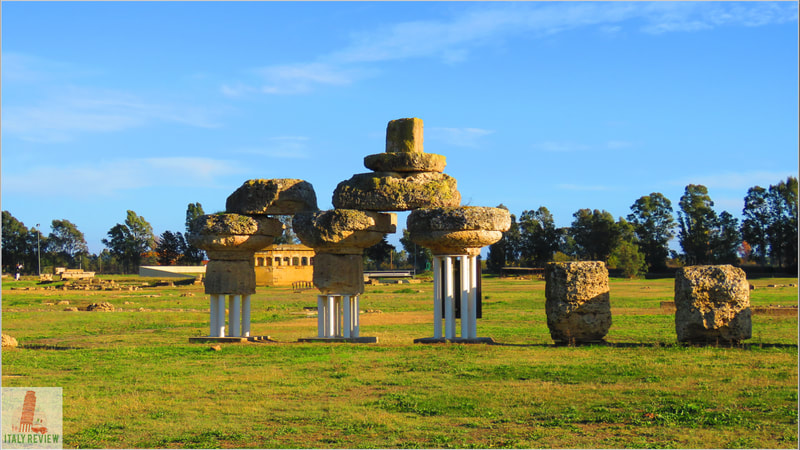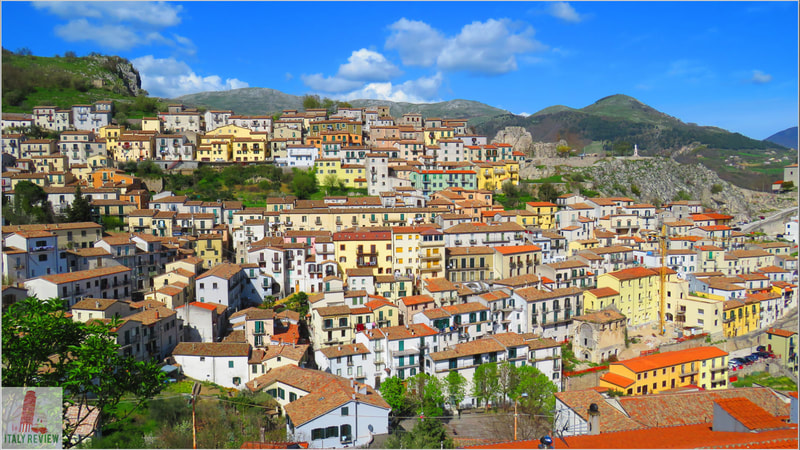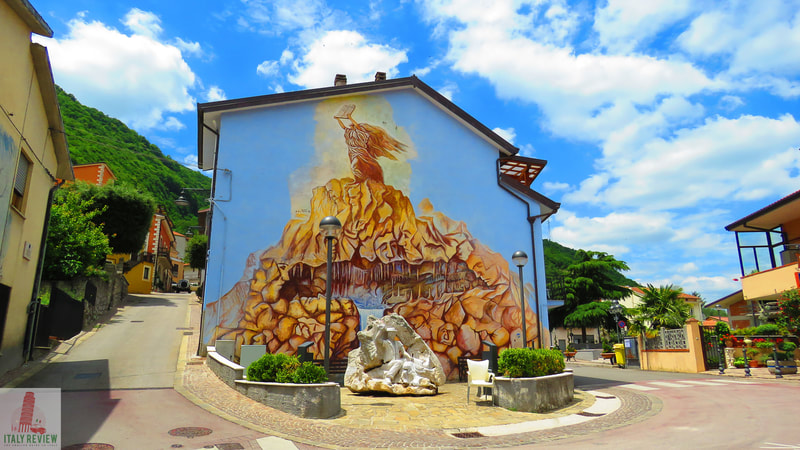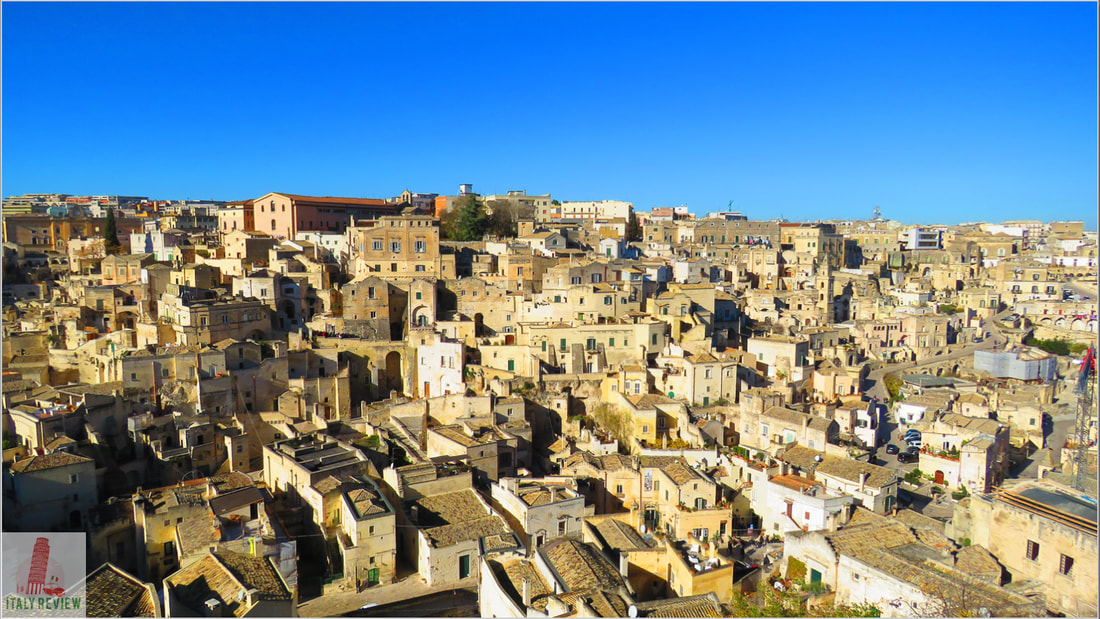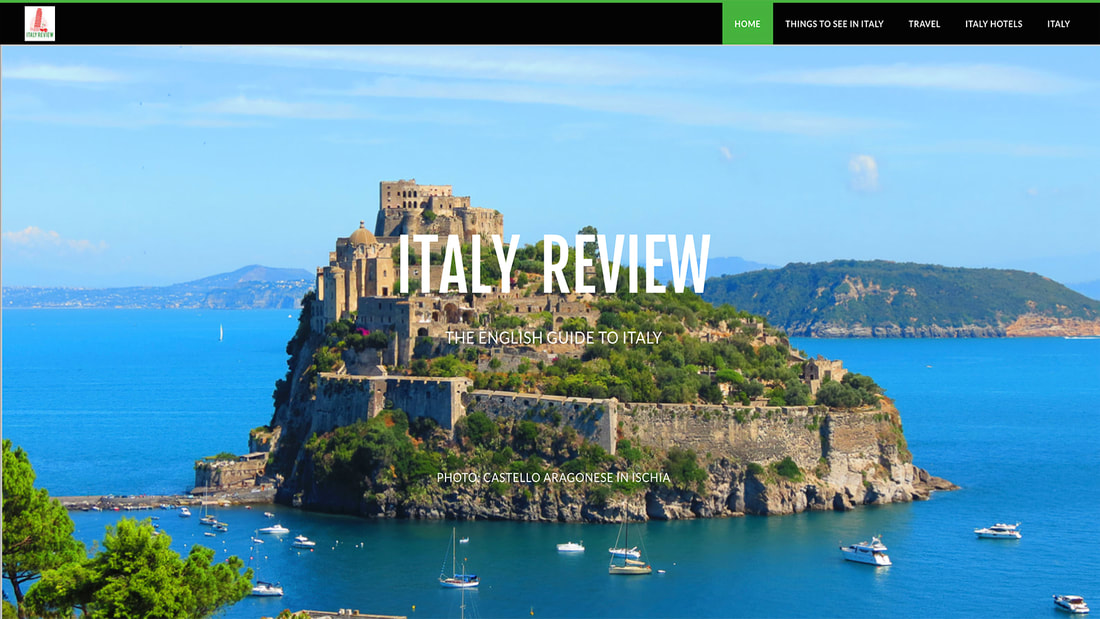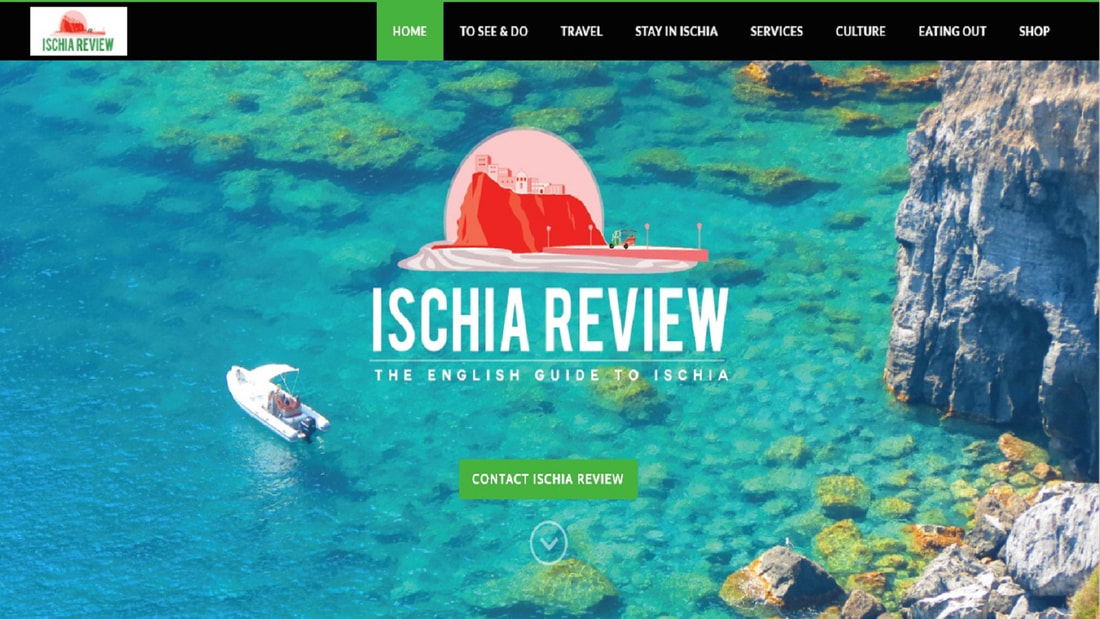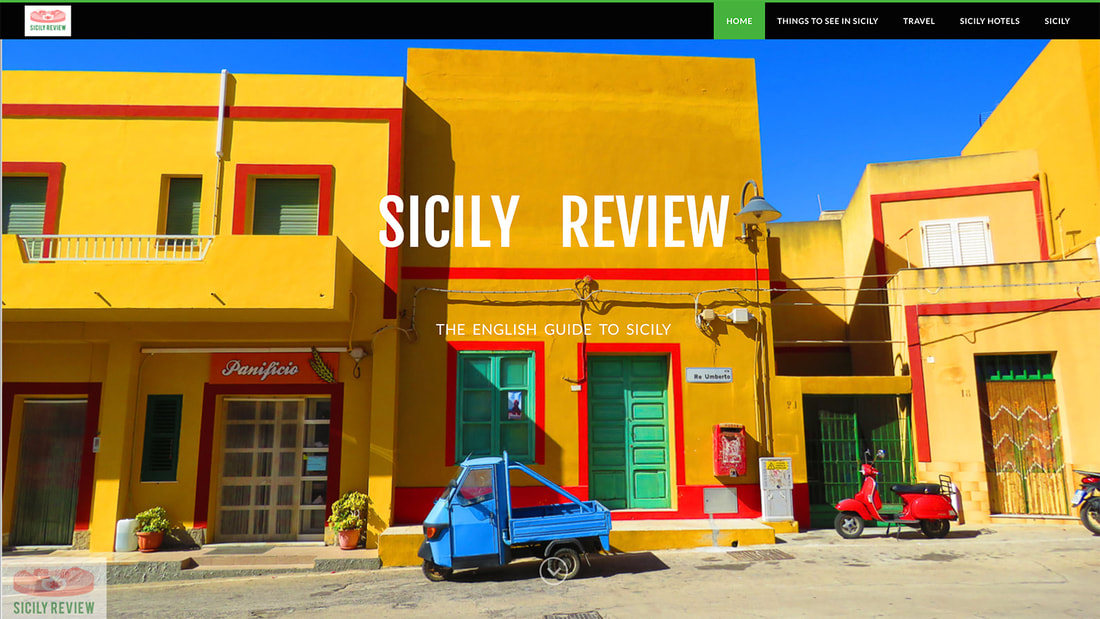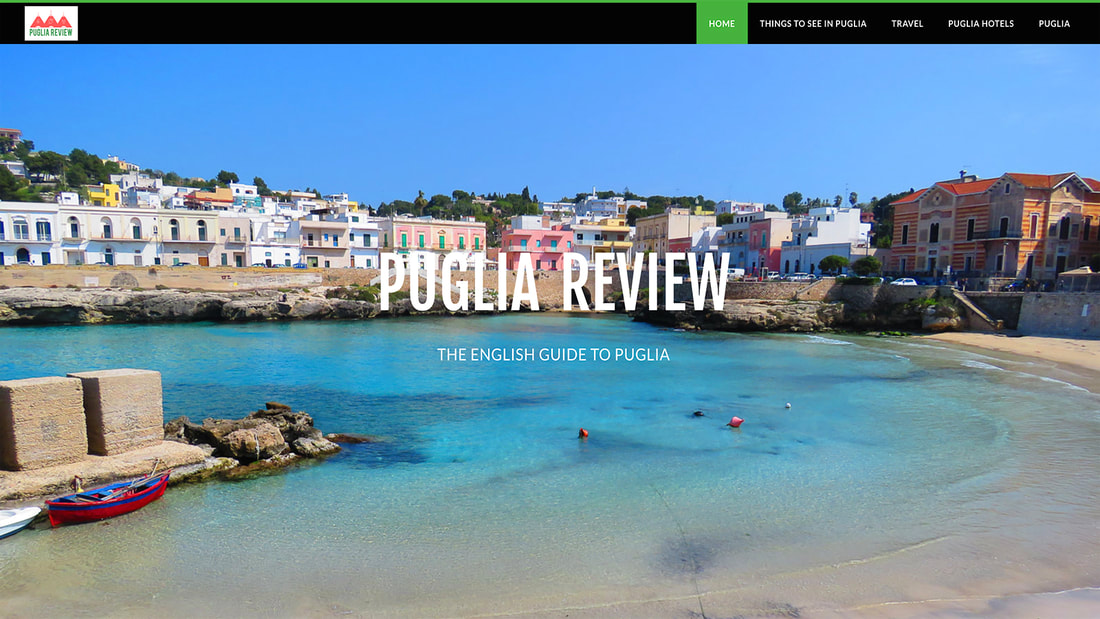Basilicata
Latest update: 22 March 2023
|
Occupying an area of land that could be described as the instep of Italy's boot, Basilicata lies firmly off the typical beaten path of tourism and this is perhaps its greatest charm.
The region has two stretches of coastline: one on the western Tyrrhenian Sea and another on the Ionian Sea to the east. The two coastlines aren't connected, but separated by the regional border with Calabria, most of which is covered by the Pollino National Park. This fact is perhaps best celebrated in the 2010 Italian film Basilicata Coast to Coast. |
|
Related links
Regione Basilicata
|
Regional capital: Potenza
Population: 545,130 (source: ISTAT 1 January 2022) Size: 9,995 km² Provinces: 2 Highlights: Matera, Muro Lucano, Metaponto, Craco, Maratea |
A quirky comedy, the film offers a gentle introduction to the region and is worth watching before you plan a visit. The storyline sees the protagonists walk from the town of Maratea on the Tyrrhenian Coast to Scanzano Ionico on the Ionian, making friends and getting into scapes along the way.
The official name of the region is derived from the word basileus which is a Greek word meaning a ruler such as a king or an emperor. The Greek influence is very strong in Basilicata as it once made up the ancient area known as Magna Graecia which also included the neighbouring regions of Puglia, Campania and Calabria, as well as Sicily. To many people, Basilicata is known as Lucania, this is the region's ancient name which derived from a tribe called the Lucani who were among the first to settle here before the Romans. You'll see the term used in various place names such as Muro Lucano or Satriano di Lucania to give just two examples.
Primo Levi's 1945 work Christ Stopped at Eboli has given rise to certain stereotypes about Basilicata. The town of Eboli sits on the border with Campania with the title suggesting that beyond Eboli there was nothing but a barren, godless land. Whether that was true at the time of political upheaval and the author's incarceration is a matter of debate but nothing could be further from the truth in modern times.
Using the word modern is perhaps the wrong place to start with Basilicata though, as the main places of interest's attractions lie in their ancient roots. The region's number one visitor attraction is the town of Matera which is also the capital of the eponymous province. The third oldest continuously populated city in the world is quite an accolade and much has happened in Matera since its foundation in the year 251 BC. The haunting, mysterious landscape of Matera is underscored by its Sassi and Rupestrian Churches which prompted UNESCO to include it in their list of World Heritage Sites in 1993. The city shot to fame years later as it was used as a backdrop for the 1994 Mel Gibson film The Passion of the Christ and was named European City of Culture in 2019.
There are two provinces in Basilicata: Matera Province to the south which comprises the Ionian coastline and Potenza Province in the north which includes the Tyrrhenian coast and the regional capital of Potenza. The hills and valleys around Potenza conceal a number of fascinating towns such as the medieval Melfi and Venosa, while the region as a whole is peppered with ancient hill towns. Among the most interesting are the likes of Muro Lucano, Rivello and San Fele while the remote villages of Pietrapertosa and Castelmezzano seem to almost defy gravity with their precarious-looking positions.
The sparsely-populated hill towns are one thing but the completely deserted ghost town of Craco is quite another. The town was completely abandoned after an earthquake in 1980 but is now safe to visit and you can take guided tours around the empty town. One of the most unique settings in Italy, it has itself been used for a number of film backdrops from the screen version of the aforementioned Christ Stopped at Eboli, to the 2008 James Bond film Quantum of Solace.
Basilicata's best seaside town is Maratea which sits on the Tyrrhenian Coast, just north of Calabria and a little way south of the beautiful Cilento National Park in Campania. Maratea comprises not only a seaside beach resort but also a charming hill town and one of the most iconic sights in the region: the Statue of Christ the Redeemer situated on a vertiginous hill-top perch. A series of beach resorts are popular during the summer months on the Ionian Coast and include among others Lido di Policoro and Marina di Pisticci.
History buffs can explore Basilicata's Magna Graecia period at archaeological sites such as Metaponto which is situated on the Ionian Coast and also comprises a museum and the Tavole Palatine just a short distance away.
Away from the history of Basilicata, two towns offer a taste of modern-day culture. Satriano di Lucania and Sant'Angelo Le Fratte are separated by just 10 kilometres and offer a choice of "Mural Towns", one seemingly outdoing the other. Each town is covered head to toe in paintings on the sides of buildings and offer a great morning/afternoon artistic day out.
Nature lovers can enjoy two of Italy's national parks in Basilicata. The Pollino National Park covers the border region between Basilicata and Calabria while the Appennino Lucano Val d'Agri and Lagonegrese National Park is situated further to the north around Potenza.
Basilicata doesn't have its own airport and is best accessed from Naples Airport which is just under two hours' drive from Potenza or from Bari Airport in Puglia which is under an hour by car from Matera. The region does have its own system of buses and trains but by far the best way to get around is by car with plenty of rental options available at the airports.
The official name of the region is derived from the word basileus which is a Greek word meaning a ruler such as a king or an emperor. The Greek influence is very strong in Basilicata as it once made up the ancient area known as Magna Graecia which also included the neighbouring regions of Puglia, Campania and Calabria, as well as Sicily. To many people, Basilicata is known as Lucania, this is the region's ancient name which derived from a tribe called the Lucani who were among the first to settle here before the Romans. You'll see the term used in various place names such as Muro Lucano or Satriano di Lucania to give just two examples.
Primo Levi's 1945 work Christ Stopped at Eboli has given rise to certain stereotypes about Basilicata. The town of Eboli sits on the border with Campania with the title suggesting that beyond Eboli there was nothing but a barren, godless land. Whether that was true at the time of political upheaval and the author's incarceration is a matter of debate but nothing could be further from the truth in modern times.
Using the word modern is perhaps the wrong place to start with Basilicata though, as the main places of interest's attractions lie in their ancient roots. The region's number one visitor attraction is the town of Matera which is also the capital of the eponymous province. The third oldest continuously populated city in the world is quite an accolade and much has happened in Matera since its foundation in the year 251 BC. The haunting, mysterious landscape of Matera is underscored by its Sassi and Rupestrian Churches which prompted UNESCO to include it in their list of World Heritage Sites in 1993. The city shot to fame years later as it was used as a backdrop for the 1994 Mel Gibson film The Passion of the Christ and was named European City of Culture in 2019.
There are two provinces in Basilicata: Matera Province to the south which comprises the Ionian coastline and Potenza Province in the north which includes the Tyrrhenian coast and the regional capital of Potenza. The hills and valleys around Potenza conceal a number of fascinating towns such as the medieval Melfi and Venosa, while the region as a whole is peppered with ancient hill towns. Among the most interesting are the likes of Muro Lucano, Rivello and San Fele while the remote villages of Pietrapertosa and Castelmezzano seem to almost defy gravity with their precarious-looking positions.
The sparsely-populated hill towns are one thing but the completely deserted ghost town of Craco is quite another. The town was completely abandoned after an earthquake in 1980 but is now safe to visit and you can take guided tours around the empty town. One of the most unique settings in Italy, it has itself been used for a number of film backdrops from the screen version of the aforementioned Christ Stopped at Eboli, to the 2008 James Bond film Quantum of Solace.
Basilicata's best seaside town is Maratea which sits on the Tyrrhenian Coast, just north of Calabria and a little way south of the beautiful Cilento National Park in Campania. Maratea comprises not only a seaside beach resort but also a charming hill town and one of the most iconic sights in the region: the Statue of Christ the Redeemer situated on a vertiginous hill-top perch. A series of beach resorts are popular during the summer months on the Ionian Coast and include among others Lido di Policoro and Marina di Pisticci.
History buffs can explore Basilicata's Magna Graecia period at archaeological sites such as Metaponto which is situated on the Ionian Coast and also comprises a museum and the Tavole Palatine just a short distance away.
Away from the history of Basilicata, two towns offer a taste of modern-day culture. Satriano di Lucania and Sant'Angelo Le Fratte are separated by just 10 kilometres and offer a choice of "Mural Towns", one seemingly outdoing the other. Each town is covered head to toe in paintings on the sides of buildings and offer a great morning/afternoon artistic day out.
Nature lovers can enjoy two of Italy's national parks in Basilicata. The Pollino National Park covers the border region between Basilicata and Calabria while the Appennino Lucano Val d'Agri and Lagonegrese National Park is situated further to the north around Potenza.
Basilicata doesn't have its own airport and is best accessed from Naples Airport which is just under two hours' drive from Potenza or from Bari Airport in Puglia which is under an hour by car from Matera. The region does have its own system of buses and trains but by far the best way to get around is by car with plenty of rental options available at the airports.


